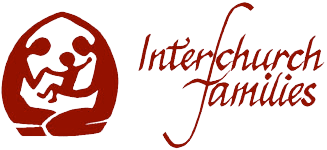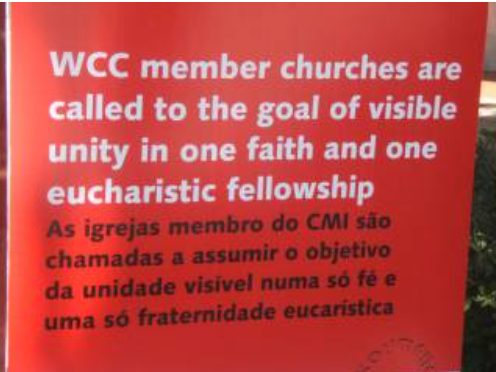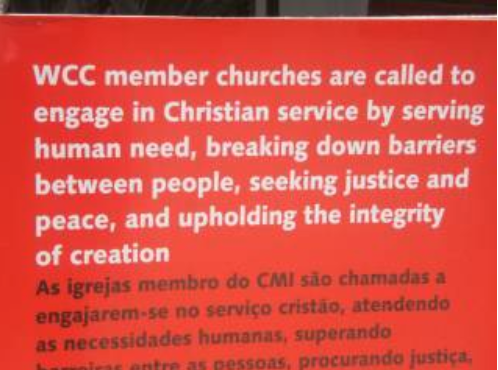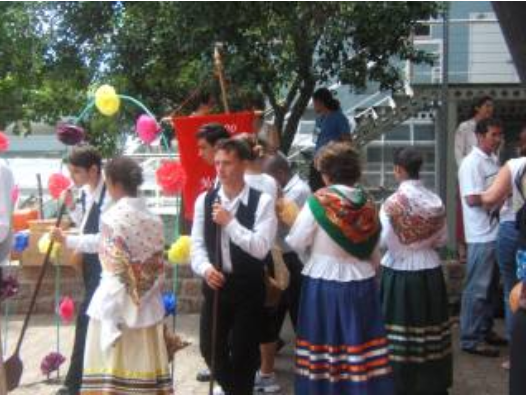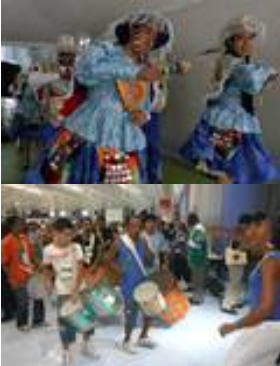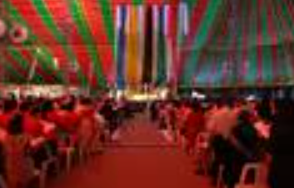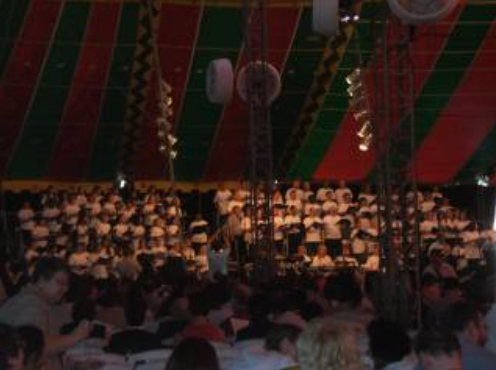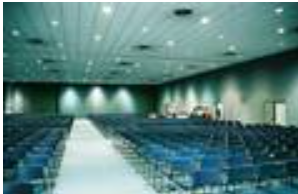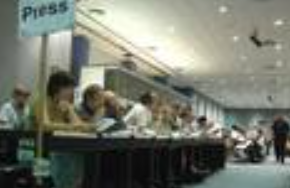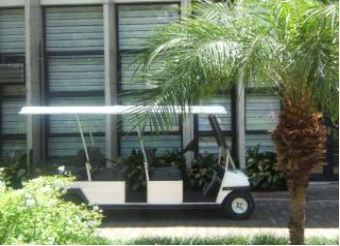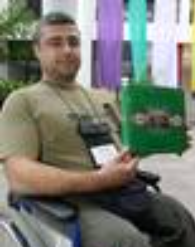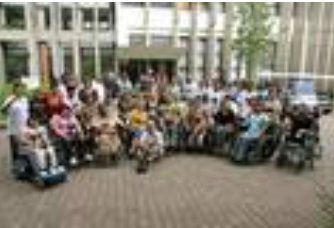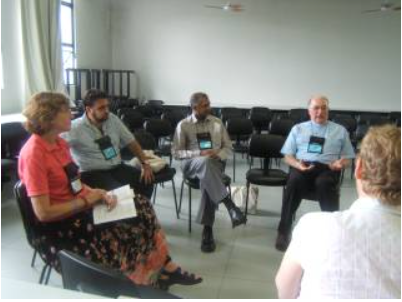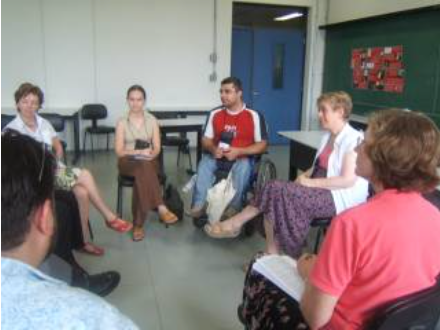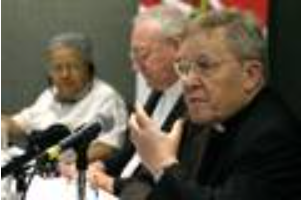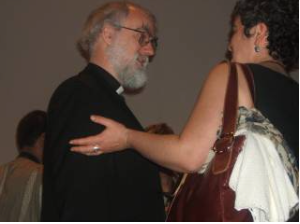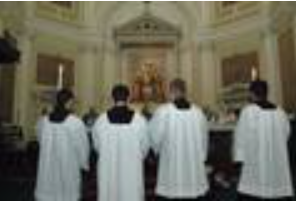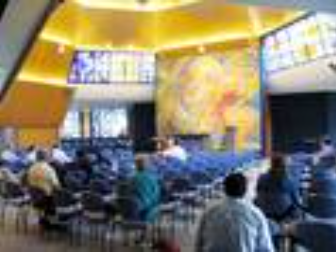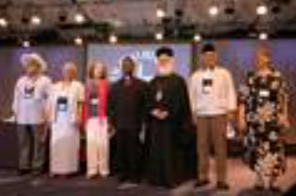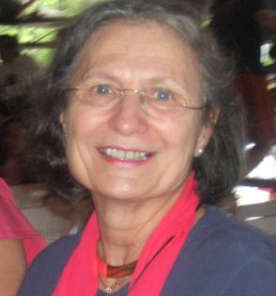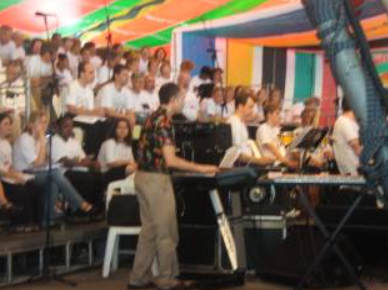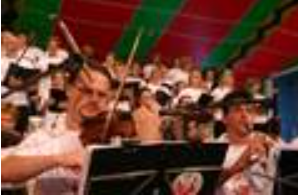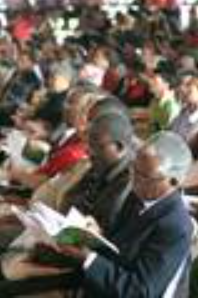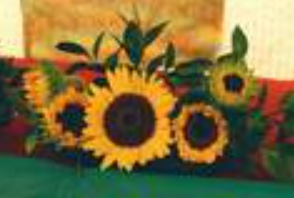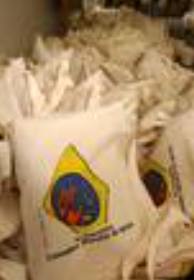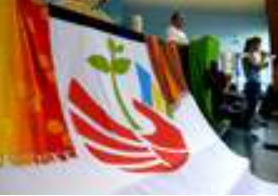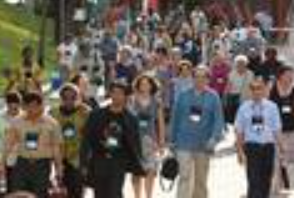555-555-5555
mymail@mailservice.com
World Council of Churches, Porto Alegre, Brazil
World Council of Churches 9th General Assembly
Porto Alegre, Brazil, 14 – 23 February 2006
‘God, in your grace, transform the world’
(Rev Beverley Hollins, Anglican curate at Christ the Cornerstone church in Milton Keynes, England, married to Paul (RC), and Melanie Finch (RC) from Repton, Derbyshire, England, married to Richard (Anglican) represented the Interchurch Families International Network at the WCC Assembly in Brazil. Bev, an official observer invited by the WCC, attended the plenary sessions, while Melanie participated in the Mutirão. Together they set up an exhibition stand to show the history and work of the interchurch families movement, through groups and associations around the world, in supporting family life and furthering church unity. They also ran a workshop about interchurch families.)
The World Council of Churches (WCC) holds a General Assembly every 7 years. The Assembly is the supreme legislative body of the WCC. The formal purpose of the Assembly is to review programmes and determine the overall policy of the WCC, as well as to elect Presidents and appoint a Central Committee which serves as the chief governing body of the WCC until the next Assembly.
The Assembly was invited to Brazil by the WCC’s Brazilian member churches and the Brazilian National Council of Churches (which includes the Roman Catholic Church). The venue for the Assembly was the events centre of the Pontifical University of Rio Grande do Sul.
Porto Alegre
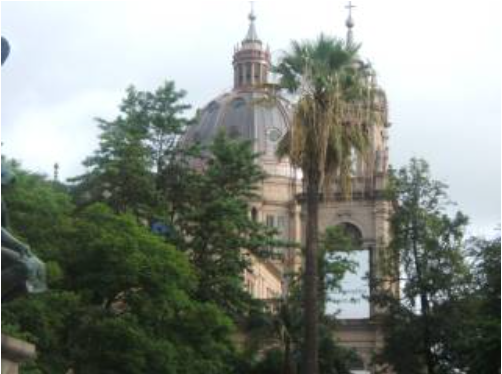
Cathedral

Farroupilha Park
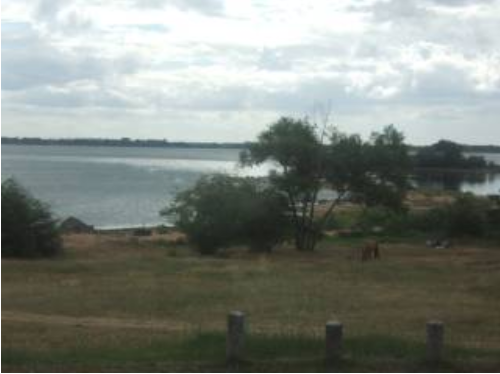
River

Soccer Ground

Theatre
Porto Alegre is the largest city in southern Brazil with a population of 1.5 million people. Over 700 delegates and their advisors, representing over 340 member churches of the WCC, carried out their work in a programme that included prayer, Bible study, thematic plenary sessions, hearings and committee work.
Campus Creche Tent Building 50
Alongside the committee work and business sessions for the delegates, the Assembly was also a time of celebration and sharing for the many thousands of other visitors at the event. A highlight of the Assembly was the ecumenical partnership programme or ‘Mutirão’ – a Portuguese word which means coming together, celebrating together, reflecting together.
Dancers and Musicians from Bolivia, India and the Cook Islands
It was precisely for this reason that the WCC provided a space that was open to a wide range of churches, ecumenical organisations and groups from around the world, such as the Interchurch Families International Network. Interchurch families have attended WCC Assemblies before, notably the last two in Canberra and Harare, but this was the first time we had been invited to send an official observer.
The daily programme of the Mutirão included a range of presentations, exhibitions, and discussions open to all Assembly participants. A central element of the Assembly for all participants was the worship life, where the nearly 5000-strong community gathered for prayer and meditation, drawing on the diverse spiritual experience of the churches around the world.
Exhibition Hall
Worship Tent Choir
The preparatory work for the 9th Assembly was conducted by the Assembly Planning Committee and the Assembly Worship Committee under the supervision of the WCC Central Committee. These committees met regularly during the period leading up to the Assembly. The event was coordinated by an Assembly Office in Geneva, and by a local coordinator based in Porto Alegre.
The pattern for each day was broadly the same. After collective morning worship, there was Bible study. Delegates and observers met in small mixed groups, the same group each day, which enabled them to become very familiar with other members of their group and enter into deeper exchanges. Many of them had studied the Bible texts before the Assembly in their own countries and so brought insights from further afield. In the Mutirão, participants met all together in the plenary hall, and there was a presentation before they gathered in small discussion groups with the people who happened to be sitting around them.
The presentation took many forms: drama, dance, film, sounds, reading. We found ourselves caught up in exciting new ways of reading and celebrating the texts which we already felt we knew. It was fascinating to find out about the people sitting around us, different each day, with many backgrounds and views. The first session included welcomes to people from each continent, who had to stand up and say one word in their own language: the words were ‘hallo’, ‘forgiveness’, ‘sorry’, ‘welcome’, ‘thankyou’, ‘transformation’, and ‘mutirão’. Who chose which word for which continent? Another highlight was ‘breathing the Spirit’ in a gesture passed around the hall. I met people from many parts of the world and cultures which I knew nothing about, and our study of the Bible together was challenging and exciting.
The next session of the morning was Ecumenical Formation, where again delegates and observers met in small groups, and Mutirão participants started in plenary and then often broke into small discussion groups. Together we studied patterns of ecumenical working from around the world and shared our own experience.
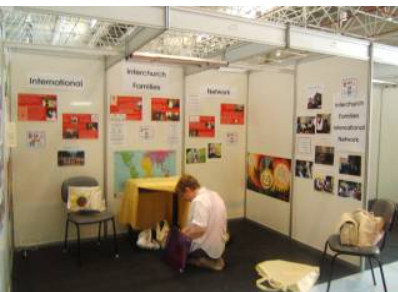
Setting up stand
Later in the morning delegates and observers returned to the plenary hall to continue their meetings, hearings and consultations. I would go to the exhibition stand to speak to visitors about the work of interchurch families groups and associations in support of such families and priests and pastors caring for them, and sharing with church leaders their experience of living unity every day. I spoke to people from many continents in several languages during the two weeks.
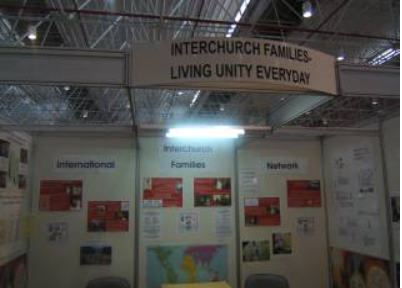
Exhibition Stand
Some found it quite alien to their culture or religious tradition to think of couples marrying across Christian boundaries, others recognised situations of tension and difficulty which related to their own experience. Towards the end of the Assembly I gave a recorded interview to the local RC bishop, who was interested in the work we were doing and wanted to share it with his brother bishops. In the Porto Alegre area there are many people of German Lutheran origin and situations can occur where pastoral care which is more shared between the churches would be a great help
During the lunch hour we would enjoy a meal in one of the university canteens, which served vast and varied buffets – all you could eat for less than £3/€4/$5! We had to resist taking more than one plateful and be very sparing on the desserts! It was a good moment to walk around the beautiful campus, enjoy the cultural presentations, meet new people at your table. Each day there was a conversation organised between a member of the youth forum and an ecumenical leader from an older generation, a ‘baté-papo’ (chat). The young people (‘young’ meant below 30) at the Assembly were active and passionate about ecumenism, and it was good to see them affirmed. Each generation had much to learn and share with others. The young stewards who enabled much of the behind scenes work came from many diverse backgrounds and were indefatigable in helping everybody to settle in and work effectively. Working as a steward is hard, but a really great way for young people interested in ecumenism to meet others and share their Christian faith.

Disability Forum
Buggy Fadi from Lebanon EDAN
As well as the Youth Assembly which had started a few days before, there was an Assembly of the Ecumenical Disability Advocates Network. Delegates and participants with disabilities were very much part of all the activities. The campus was ideal for getting around using various methods.
Another Assembly which started beforehand was the Women’s Assembly, whose participants organised a march against violence against women during the week. Several of the exhibition stands and workshops reminded us that women still suffer from violence and discrimination in many parts of the world. Bev was urged to wear her clerical collar by several women who felt it was a witness to a reality that they could not yet share in their culture or country.
At various times each day, but particularly during the afternoons, there were workshops on literally dozens of different subjects, in several languages. We found it difficult to attend many of them, as we were busy elsewhere, but on the first day it was very important for us to go to the one organised by the Joint Working Group of the World Council of Churches/Roman Catholic Church: ‘Forty years of Relationships between the World Council of Churches and the Roman Catholic Church.’ (The RCC is not a formal member of the WCC, but works in close cooperation with it.) Their report on work done together over the past 40 years, and particularly since the last Assembly, contained a section on interchurch marriage and a number of the issues which continually concern us, and had been distributed to all participants in the Assembly. It was adopted later in the Assembly. We were told that interchurch marriage would remain very much on the agenda of the JWG because it was an ongoing and pressing subject. In fact, a South African Presbyterian delegate spoke about it later in the Assembly at one of the plenary sessions.
Workshops and other Meetings

JWG Workshop
Later in the week I attended a workshop on Spirituality led by Myra Blyth from the Baptist Union of Great Britain, and Ruth Bottoms. The workshop began from ‘the definition of spirituality as the conjunction of theology, prayer and practical Christian life’ and sought ‘to explore cultural and spiritual expressions of this.’ More than 60 people crowded into a small room, and I wondered how on earth we could manage to be very spiritual! We were invited to contemplate a series of diverse images representing scenes from the Bible, liturgical moments, religious gatherings, and think about which one we appreciated most and which disturbed us most.
The images were very varied and came from different cultures, some were abstract, others more graphic, some poignant, others violent. Then we talked about this in small groups and then in the larger group. It was a very rich experience much appreciated by everybody.
Another workshop: ‘Spirituality in Lay Spiritual Communities’ offered insights from Taizé, Iona, Focolare and other groups with much experience of working across traditional Christian boundaries.
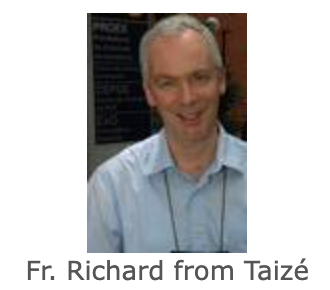
The workshop which we ourselves ran, ‘Interchurch Families: Catalysts for Unity?’ was held towards the end of the Assembly and brought together a small group of diverse people to share experiences.
Bishop Farrell and Archbishop Rowan Williams
Cardinal Kasper from the PCPCU
Various significant leaders visited the Assembly during the two weeks. Cardinal Kasper, President of the Pontifical Council for Promoting Christian Unity, gave an address, and so did Rowan Williams, Archbishop of Canterbury. The Archbishop also met Anglicans from around the world who were attending, and took part in one of the lunchtime chats.
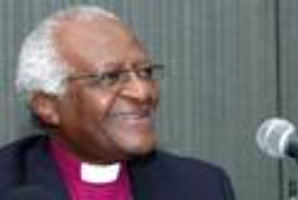
Another visiting archbishop was Archbishop Desmond Tutu from South Africa, who addressed the Assembly and led a March for Peace in the city one evening. President Lula of Brazil also addressed the Assembly one day, which involved a great number of very elaborate security measures and a lot of noise from his supporters and his opposition, as you can imagine.
On the Sunday business ceased, and Assembly participants were invited to local churches to worship. Bev and I attended Mass at the Roman Catholic cathedral.

There were many visitors, and the community had prepared readings and prayers in different languages, with leaflets to help us follow the Mass.
The procession to the altar was very long, with all the visiting clergy! One of the Assembly stewards’ scarves was brought up to the altar at the Offertory, and we were warmly welcomed. At the end of the Mass, greetings were given to the congregation from a member of the Iona Community, a brother from Assissi, an ecumenical leader from Germany. A special welcome was given to the delegation from the Vatican. We felt very much part of the worshipping community, which sometimes isn’t the case in a cathedral.
One lunchtime we also attended an Anglican Eucharist in the University Chapel, which brought us among people from many different provinces of the Anglican Communion. The local bishop and clergy warmly welcomed everybody, and we felt that the Sign of Peace was a very significant gesture at a time of tension within the Communion.
University Chapel
As the Assembly drew to an end, the business meetings became more pressured as statements and commitments had to be more and more closely defined. In the background, committees were meeting in the lunch hours and evenings to draft and re-draft, and then present the material the next day for consideration by the delegates.
The consensus method of discussion and agreement which was being used for the first time at a WCC Assembly began to be used more confidently, and the Moderators worked hard to enable young and old, men and women, people from different countries and cultures, to have their say and feel they were being heard and acknowledged.
We were absolutely delighted when the President elected to represent Europe for the next session of the WCC was Mary Tanner, a member of AIF UK’s pastoral network, who worked with our founder Martin Reardon for many years, and preached the sermon at his funeral.
The final act of worship was a bringing together of all the symbols which had been used during the past two weeks, and used much of the wonderful music in many languages which we had learned and shared. The Assembly choir drawn from local churches, which had been practising for two years together, were admirably led, arriving very early each morning to greet us as we alighted from the buses with song. Other talented musicians, such as Ulf from Norway, a blind pianist, drummers from several lands who jammed together during the service, and the Danish family with two young girls who were able to extemporise at will, had enabled us to celebrate with our voices and whole bodies day by day. The thanksgiving was warm from us all.
Worship
Bread Orthodox Worship
Choir Blind musician Ulf Nielsen from Norway
One legacy of the Assembly to be remembered: we were very aware that with all the books and booklets and leaflets and notices that had been produced in the run up to the Assembly and during it, we had probably used up a forest, and this was quite significant in a country like Brazil
Bags of Bags Assembly Banner

Tree Planting
A token gesture in acknowledging this was made by the planting of a tree in the campus by some of the significant people there.
Bev and I worked very hard, and enjoyed ourselves very much at the Assembly. We felt very privileged to be representing interchurch families from many countries, and we are very grateful to the Association of Interchurch Families in the UK for sponsoring us to take part.
Diversity Banner Going Home
We encourage you to look at the website www.wcc-assembly.info for much more information, recorded interviews, photos and presentations. The Assembly newspaper sums up well the feel of each day. And think about attending the next Assembly, wherever it might be!
Contact Us
3rd Floor,
20 King Street,
London,
EC2V 8EG.
Contact Us
Telephone: +44 (0)20 3384 2947
Email: info@interchurchfamilies.org.uk
Registered Charity No. 283811
